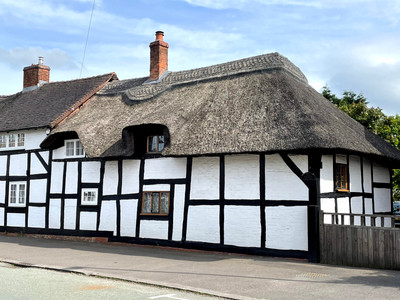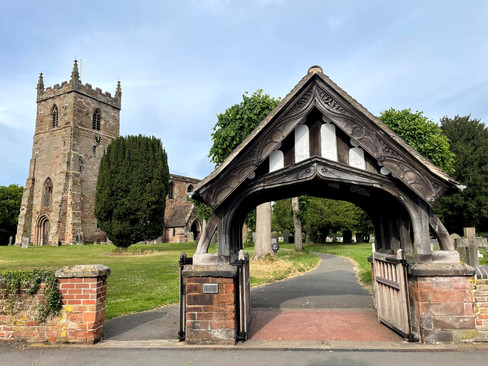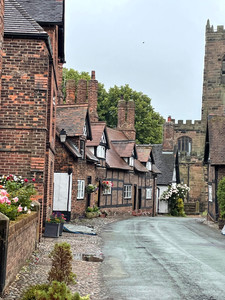Back on the straight and narrow
- The Commodore
- Jul 18, 2021
- 6 min read
Dear Motley Crew,
We had begun our journey down the River Soar with some trepidation as to what lay ahead, but as we came to the river’s end and returned once again to the concrete-edged confines of the canal, we both felt a sense of contraction and the feeling that we were leaving behind something rather special. Such is the allure of rivers. But the way forward lay along the canals, and so on we pressed.
The Trent and Mersey canal was not unknown to us, having voyaged along its western length last year. This eastern section, however, was new territory to be explored. The milepost in Shardlow pointed out that we still had quite some distance to travel – in narrowboat terms – before we would reach this canal’s end at Preston Brook.

There, we would join up to the Bridgewater canal, then a run along the Leeds and Liverpool Leigh Branch canal would take us onto the Leeds and Liverpool proper and on into Liverpool city. But I was getting ahead of myself - over 100 miles of canal lay between us and Liverpool. Time to crack on.
Shardlow, considered to be Britain’s most complete example of a canal village, was the first village that we encountered, and it has an impressive collection of original warehouses to support this claim. It is a village of two distinct parts and with two distinct histories. To the west is the old village, which pre-dates the canal, and to the east, the inland port which was created by the construction of the Trent and Mersey canal in1777. The town was a major river port until the mid-1800’s when the advent of the railways saw off much of the canal trade.
Many of the former warehouses and other port buildings have, however, survived, and have been given a new lease of life either as private dwellings and apartments, or as new commercial ventures, such as restaurants.
All of that is no doubt remarkably interesting but the most interesting fact by far is that the village was, at one time, the site of an orphanage, and all the foundlings who were cared for there were given the surname of “Shardlow”.
The transition from river to canal, and the subsequent narrowing of the waterway, also brought about a transition from double locks to narrow locks.

Narrow locks mean less work for the lock operator - what a joy!

It also saw a return to delicate bridges,

with graceful proportions.
Not much further along the canal, we came upon Tarasivka, a Ukrainian camp established in 1944 on what had been an army railway engineers site. Initially used to house Ukrainian refugees after the war, it is now used as a youth camp for children of Ukrainian descent. Although open to the public, the scourge of Covid put paid to us experiencing it for ourselves. Perhaps next time.
We smelt Burton-on-Trent before we saw it. It's all to do with the water you see. And the rocks. And of course, the beer, for it is here that Marston's have established their brewery. It seems that Burton-on-Trent's water has the highest natural sulphate content of any brewing town in the world - hence the "eggy" smell in the air when brewing is at full steam. It was certainly apparent when we rolled into town.

It seems that the aroma is known locally as the "Burton snatch".
We were now not far from Fradley Junction, the point at which, in October of last year, we had turned off the Trent and Mersey and headed down the Coventry Canal. All that lay between us and the junction, was a short section where the River Trent, and its weirs, imposed itself on the canal for a final rendezvous.
The river twists and turns and at times the course and the way ahead is camouflaged by the tall reed beds and weeds along its borders. Not until you’re almost upon it does this bridge advise that left rather than under would be the more intelligent route.

Industrial-sized paddles, set by some unknown hand, and thankfully requiring no action on our part, reared out of the tangle of weeds just ahead of us.

Another sharp turn, ill-judged and taken just a tad too slowly, brought us uncomfortably close to these buoys and the entrance to No Man’s Land.

It was with relief that we locked back onto the canal section and cruised into Alrewas.
In the grounds of the churchyard, we happened upon these nomadic dromedaries and deliberated as to whether they were in search of the Magi or the eye of a needle. Whatever their mission, it had obviously become all too much for the lead camel who had sunk to his knees either out of sheer exhaustion or despair.
At last, Fradley Junction. Our previous visit had been in autumn with winter rapidly approaching. The days had been grey, and the trees bare of leaves.

This time, however, we had clear skies and the rhododendrons lining the canal were in full bloom.
The contrast could not have been more marked.
We passed under this rather elegant bridge, built long ago by the owner of a nearby grand house who was evidently intent on making something of a statement. What a difference a season makes.
We were making progress. This nearby cast-iron mile-post suggested both a sense of achievement and a degree of encouragement as Preston Brook drew closer.

Just outside Stoke-on-Trent, we happened upon this fellow who was working his way out of a lock.

It's generally advised that canoeists portage around locks, however, this intrepid explorer had chosen to go through in company with a narrowboat. I’m not sure whether he was brave or plain foolish.
It was now clear that we were in pottery territory - a fact confirmed by the presence of this distant factory,

and this bone and flint mill.

I have to admit that I had never before realised the importance of flint and cattle bones to the production of china. It seems that the former was added to both give strength to the finished product, and to prevent shrinking during firing, whilst the latter added whiteness. Delicacy came at a price, however, as the clouds of dust produced when crushing and grinding the flint caused many workers to succumb to what was then known as potter’s rot – silicosis of the lungs. I also have to admit that I’d never actually thought about the origin of the term ‘fine bone china” before either. The longer I travel and the more I see, the more I concur with Socrates' observation that “the more I know, the more I realise I know nothing.”
But here, looming large ahead of us now at Eturia Junction, was a man who did know something about something.

James Brindley, who had clearly gone up in the world since we’d last made his acquaintance in Coventry, was the man responsible for planning and building the Bridgewater Canal, along which we would soon travel, the Coventry Canal and Oxford Canals, along which we had travelled last year, and the Harecastle tunnel, through which we were about to pass.
We had been through Harecastle tunnel last year as we made the journey off the Macclesfield canal towards the south. This time, however, we would be travelling in the opposite direction.
Sitting in the uniquely-coloured water with the behemoth ahead of us, we awaited starter's orders.
Forty-five minutes later, we emerged from the tunnel's northern portal. We passed the entrance to the Macclesfield canal on our left, and continued to make our way along the Trent and Mersey.

Off to our right now, we were catching occasional glimpses of a church tower, and realised that it was the same church tower that had tantalised us on this stretch last year - St Mary and All Saints in Great Budworth. We decided that this time we would not pass up the opportunity to visit.
Some of the crew may recall from a previous missive, that Great Budworth was one of the locations used by the BBC in its War of the World series, and on that basis alone, we presumed that the village must be worth the hour's slog along the over-grown footpaths and up the hill in the rain. It was.
A sidestreet led us to a house selling freshly-made jams, chutneys, and lemon butter, and packs of freshly-laid eggs. Having learned to always carry some cash with us "just in case" we staggered back to the boat with our backpacks bulging with produce. Our next course of action was an obvious one. Find that link to The War of the Worlds and look at it again with new eyes.
Ahead of us now lay three tunnels in quick succession - thankfully all of them timed which effectivley meant that we'd not encounter any on-coming traffic - and then we were onto the Bridgewater canal.

When last we passed this stunning building, the plans were to demolish it to make room for apartments. Seems as though some compromise may have been reached as the new apartments are now blended in with the former factory.
The rural was now giving way to the urban - Waters Meeting Junction and the turn towards Liverpool was not far off.
A right-hand turn here would take us into Manchester City, the route we'd taken twelve months ago.

This time, however, we were taking the left-hand channel and turning our bow towards Liverpool. Liver Birds here we come.
The Captain, The Commodore and Mrs Chippy

















































Read Coviid for
Read Covid for